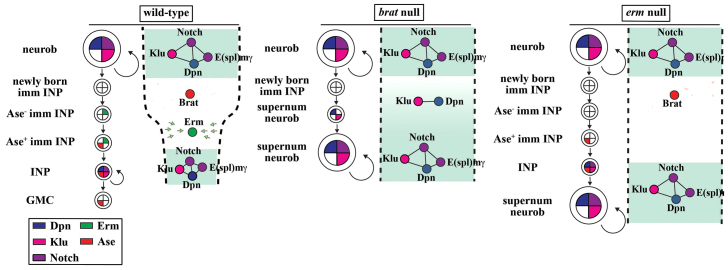Fig. 7.
Schematic models depicting the role of Brat and Erm in the regulation of immature INPs. In wild-type brains, Erm functions temporally after Brat to restrict the competence of immature INPs to respond to the self-renewal network (indicated by the width between dotted lines). The self-renewal network is expressed in type II neuroblasts (light cyan area), but is deactivated during maturation by Brat (white area). An Erm-dependent restriction of developmental potential (green arrows) in immature INPs, leads to an attenuated competence to respond to the re-activation of neuroblast self-renewal factors in INPs (light cyan area). In brat amorphic brains, the newly born immature INPs fail to undergo maturation and rapidly revert into supernumerary neuroblasts. In erm amorphic brains, immature INPs undergo successful maturation, but their competence to respond to neuroblast self-renewal factors is not attenuated. Thus, upon re-expression of neuroblast self-renewal factors, INPs revert to form supernumerary neuroblasts.

